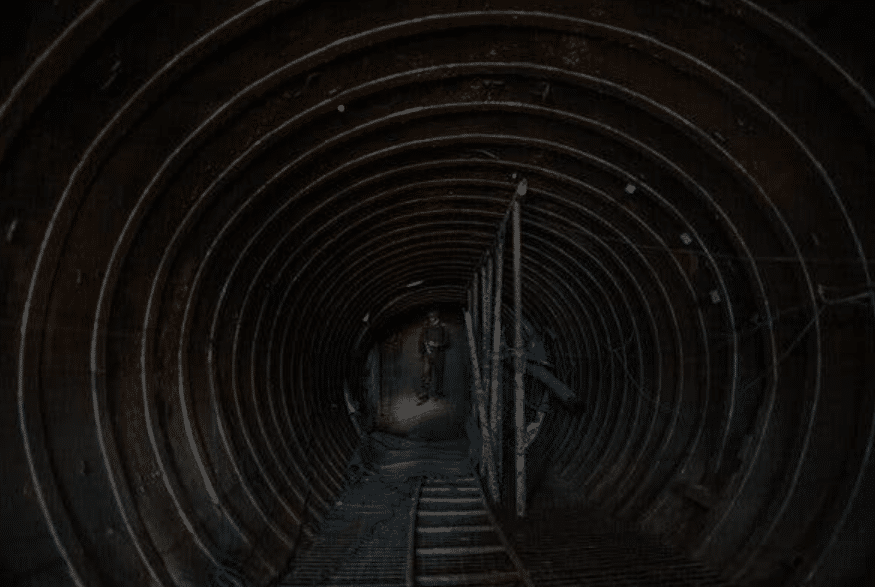One tunnel in Gaza was wide enough for a top Hamas official to drive a car inside. Another stretched nearly three football fields long and was hidden beneath a hospital. Under the house of a senior Hamas commander, the Israeli military found a spiral staircase leading to a tunnel approximately seven stories deep.
These details and new information about the tunnels, some made public by the Israeli military and documented by video and photographs, underscore why the tunnels were considered a major threat to the Israeli military in Gaza even before the war started.
But Israeli officials and soldiers who have since been in the tunnels — as well as current and former American officials with experience in the region — say the scope, depth and quality of the tunnels built by Hamas have astonished them. Even some of the machinery that Hamas used to build the tunnels, observed in captured videos, has surprised the Israeli military.
The Israeli military now believes there are far more tunnels under Gaza.
[The New York Times Report continues]
For the Israeli military, the tunnels are a subterranean nightmare and the core of Hamas’s ability to survive. Every strategic goal of Israel in Gaza is now linked to wiping out the tunnels.
“If you want to destroy the leadership and arsenal of Hamas, you have to destroy the tunnels,” said Daphné Richemond-Barak, a tunnel warfare expert at Reichman University in Israel. “It’s become connected to every part of the military missions.”
Hamas has invested heavily in the tunnels since it does not have the resources or numbers to fight the Israeli military in a conventional war. The group uses the tunnels as military bases and arsenals, and relies on them to move its forces undetected and protect its top commanders.
One 2022 document showed Hamas budgeted $1 million on the tunnel doors, underground workshops and other expenses in Khan Younis.
Israeli intelligence officials recently assessed that there were about 100 miles of tunnels just under Khan Younis, southern Gaza’s largest city, where Israeli forces are now in heavy fighting. Yahya Sinwar, the military leader of Hamas in Gaza, had a home in Khan Younis.
[The New York Times Report continues]
One soldier, speaking on the condition of anonymity for safety reasons, said he oversaw the destruction of about 50 tunnels in Beit Hanoun. All of them were booby-trapped, he said. The soldier, an officer in the combat engineers, said his unit had found bombs hidden in walls and a massive explosive device that was hard-wired to be remotely activated.
soldier, who was a reservist and has since been discharged, said the device had been made in a factory and had a serial number on it. If it had gone off, the bomb would have killed anybody in the tunnel and directly outside it, he said.
Hamas released a video in November showing how it lured a group of five Israeli soldiers to a tunnel entrance in Beit Hanoun and then used a roadside bomb to kill the soldiers.
Ms. Richemond-Barak said Hamas had imported the tactic from Syrian rebels who killed dozens of government troops in a tunnel attack in 2014 in Aleppo.
On Jan. 8, Israeli soldiers took journalists to see three tunnel shafts in central Gaza — one inside a one-story farm building on the outskirts of Bureij, the second inside a civilian steelworks on the edge of Maghazi and a third inside a shed near the steelworks.
The shaft in the steelworks was the deepest and most sophisticated. It descended roughly 30 yards and was fitted with some kind of elevator. The soldiers said it was used to transport munitions parts that were molded in the steelworks. A bucket of shells or rocket heads lay nearby. The soldiers said the shells were based on a template of a yellow U.S.-made mortar shell inscribed with the words “20 mm mortar shell; Lot 1-2008.”
The soldiers did not allow journalists into the shaft, citing the risk of explosions, but said Hamas would carry the munitions parts into the tunnel to transport them to another part of the tunnel network, where they would be fitted with explosives.
The tunnel was said to lead to a nearby shed made from corrugated iron. The journalists were escorted to that shed, where they saw 10 large rockets that were roughly three yards long and painted olive green. The rockets were contained in long oblong cages, possibly used to transport them.
[The New York Times Report continues]
Hamas has improved its ability to conceal the tunnels, but the senior official said the Israeli military had figured out one of the group’s operating models. The official called it the “triangle.” Whenever the Israeli military finds a school, a hospital or a mosque, soldiers know they can expect to locate an underground tunnel system beneath them, the official said.
Destroying the tunnels is not an easy task, the official said. They need to be mapped, checked for hostages and not just damaged but made irreparable. Recent attempts to demolish the tunnels by flooding them with seawater have failed.
The official estimated it could take years to disable the tunnel system.
Julian E. Barnes contributed reporting from Washington.
Ronen Bergman is a staff writer for The New York Times Magazine, based in Tel Aviv. His latest book is “Rise and Kill First: The Secret History of Israel’s Targeted Assassinations,” published by Random House. More about Ronen Bergman
Patrick Kingsley is the Jerusalem bureau chief, covering Israel and the occupied territories. He has reported from more than 40 countries, written two books and previously covered migration and the Middle East for The Guardian. More about Patrick Kingsley
View this New York Times Report from January 16th

